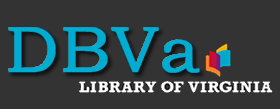CONTENT WARNING
Materials in the Library of Virginia’s collections contain historical terms, phrases, and images that are offensive to modern readers. These include demeaning and dehumanizing references to race, ethnicity, and nationality; enslaved or free status; physical and mental ability; and gender and sexual orientation.
Context
The woman suffrage movement coincided with major national reform movements seeking to improve public education, create public health programs, regulate business and industrial practices, and establish standards to ensure safety in food and public water supplies. Public debate on these issues, demand for improved infrastructure, and public services transformed politics in Virginia. People, particularly women, became more involved in political issues and this inspired them to found women’s groups where likeminded women could gather to discuss the issues of the day.
Women who were active in securing the right to vote wanted to be sure their votes counted. To that end Carrie Chapman Catt, president of the National American Woman Suffrage Association (NAWSA), proposed a “league” of women voters to use their influence to lobby for legislation important to them. In 1920, a group of NAWSA women formally organized the League of Women Voters as a nonpartisan voter education and lobbying group. After the Nineteenth Amendment was ratified, the Equal Suffrage League of Virginia dissolved and its members founded the state chapter of the League of Women Voters in November 1920. Like League members throughout the country, Virginia women enouraged voter registration, educated women and men about issues and political candidates, and promoted the passage of laws to benefit society, including child labor laws, mandatory public education, and state employment services.
The League of Women Voters opposed the Equal Rights Amendment in the 1920s, because members feared that it would remove protective legislation for women. And the League of Women voters failed to challenge racial segregation in the South. Southern chapters like the ones in Virginia had white-only requirements, and only a few Black women were members in League chapters outside the South. The majority of League members were white, college-educated women. The Virginia League did not accept integrated chapters until the 1960s, although some local leagues became outspoken advocates in the 1950s for keeping the public schools open when Virginia’s policy of Massive Resistance to desegregation threatened public education and some schools were closed. It was not until 1966 that the national League of Women Voters took a position supporting civil rights.
This broadside illustrates how the LWV approached their public and non-partisan philosophy to recruit new members. The League of Women Voters of Virginia continues today as a nonpartisan political group, working to encourage all voters to engage in full participation in government.
Citation: State Conference to Complete Organization of Virginia League of Women Voters, Richmond, Va.: The League, 1920. Broadside 1920 .S73 BOX, Manuscripts & Special Collections, Library of Virginia.
Learn more about the Virginia League of Women Voters in The UncommonWealth blog.
For additional information, see Kay J. Maxwell, "The League of Women Voters Through the Decades!" 16 Feb. 2012, League of Women Voters of the US.
Standards
Suggested Questions
Preview Activities
Take a Look: Read the broadside. What phrases stand out to you? Why?
Make a Connection: The League of Women Voters grew out of the suffrage movement that began decades before 1920. How might have the movement changed over time? If you know the names of women involved in the suffrage movement, list them and what you know about those women.
Post Activities
Analyze: Think about how long it took for women to achieve the right to vote. Why do you think it took as long as it did? What obstacles had to be overcome to achieve the right to vote?
Dig Deeper: Read about the members of the Equal Suffrage League and their efforts to gain the vote in Women Do Want the Vote, Broadside, 1916. What do you think the Virginia League of Women Voters meant when they were calling “all women” to join? Why?
Current Connections: Why do groups like the League of Women Voters of Virginia still exist in a country where women can vote?
Another Perspective: Some women organized groups to oppose voting rights for women. Why might some women not want the right to vote?
